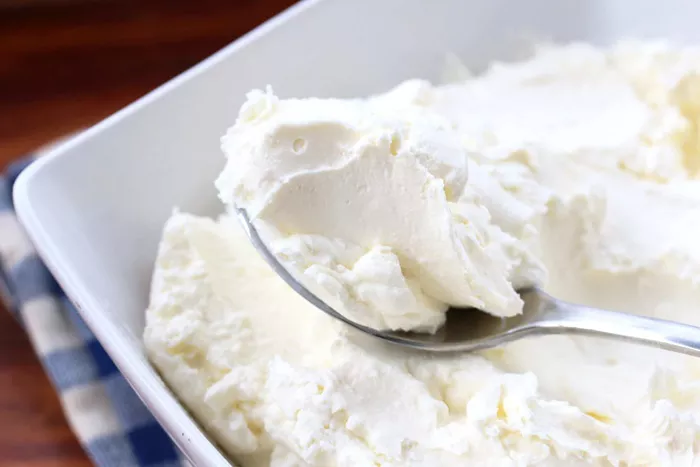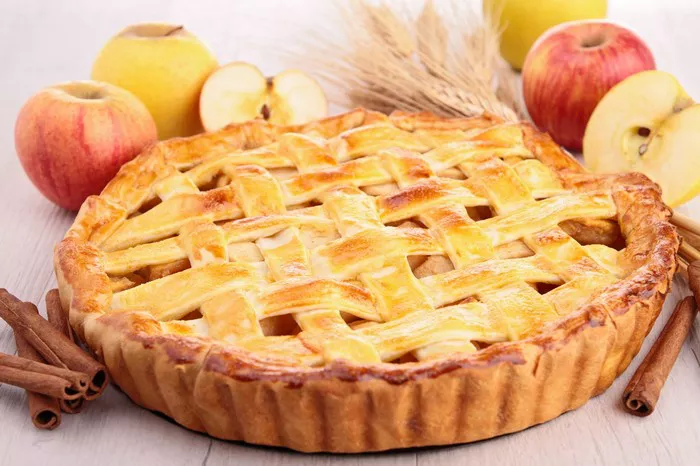Mascarpone cream cheese, a beloved ingredient in the culinary world, has earned its reputation for its rich and creamy texture, delicate flavor, and versatility. From decadent desserts to savory dishes, mascarpone cream cheese has found its way into countless recipes, enhancing flavors and elevating the dining experience. In this professional article, we will delve into the origins, production, and various culinary applications of mascarpone cream cheese, exploring its significance in the world of gastronomy.
The Origins of Mascarpone Cream Cheese
Mascarpone cream cheese has a rich history dating back to Italy, where it was first crafted in the Lombardy region during the late 16th century. The name “mascarpone” is thought to be derived from the Lombard dialect “mascarpa,” which refers to the milk’s rich cream. Traditionally, mascarpone was prepared using the cream from cow’s milk, making it an indulgent treat for Italian nobility. Over the centuries, the production methods and popularity of mascarpone have evolved, making it a cherished component in both classic and contemporary Italian cuisine.
Mascarpone’s creamy consistency and delicate, slightly sweet flavor are derived from the lactic fermentation process, where natural acids thicken the cream. The cheese curdles and thickens over time, yielding a product that is uniquely smooth and luscious. Mascarpone is not a true cheese, as it doesn’t involve the use of rennet for coagulation, which makes it more akin to a cream cheese or a dairy-based spread.
The Production Process
Mascarpone cream cheese is created through a relatively straightforward process, relying on high-quality dairy as the primary ingredient. To maintain its authenticity and quality, mascarpone producers still adhere to traditional methods.
Milk Sourcing: The first step in creating mascarpone is sourcing the finest milk available. Typically, cow’s milk is used for its richness and creaminess. The milk is heated to specific temperatures to encourage the development of the cream.
Acidification: Natural acids, such as citric acid, are added to the milk to initiate coagulation. The acidification process thickens the cream and creates the desired consistency.
Thickening: As the milk thickens and curdles, it forms a creamy, custard-like texture. The mixture is then heated to facilitate the separation of the whey from the curd, further enhancing the smoothness of mascarpone.
Straining: Once the whey and curd have separated, the curd is carefully removed and placed in a strainer or cheesecloth to drain excess moisture. This step contributes to the cream’s luxurious mouthfeel.
Packaging: After achieving the desired texture, mascarpone cream cheese is packed into containers and chilled, ready for distribution to consumers or professional kitchens.
Culinary Applications of Mascarpone Cream Cheese
Mascarpone cream cheese has won the hearts of chefs and food enthusiasts around the world due to its incredible versatility in both sweet and savory dishes. Let’s explore some of its most popular culinary applications.
Sweet Delights
Desserts: Mascarpone cream cheese is a key ingredient in many beloved desserts. Tiramisu, a classic Italian dessert, relies on mascarpone for its creamy filling. The cheese is also used in cheesecakes, mousse, and frostings to lend a luxurious texture and a touch of sweetness.
Pastries: Mascarpone can be incorporated into pastries and baked goods, enhancing the richness of items like cream puffs, Danish pastries, and croissants.
Gelato and Ice Cream: Mascarpone can be used as a base for gelato and ice cream, imparting a smooth, creamy texture and a mild, pleasant flavor.
Fruit Dips: Mixing mascarpone with honey and a hint of vanilla creates a delectable dip for fresh fruits, making for a light and refreshing dessert or snack.
Savory Creations
Pasta Sauces: Mascarpone is often used to create creamy pasta sauces that coat noodles with a luxurious, velvety texture. It pairs wonderfully with herbs, vegetables, and proteins to create a harmonious, satisfying dish.
Risotto: When added to risotto, mascarpone cream cheese contributes a creamy richness that complements the flavors of the dish, making it a creamy and decadent side or main course.
Quiches and Tarts: Mascarpone can be used in quiches and tarts to create a silky, custard-like filling, which pairs well with various vegetables, herbs, and meats.
Stuffed Pastas: Mascarpone is an excellent filling for stuffed pasta such as ravioli and tortellini, lending a creamy interior that contrasts beautifully with the pasta’s texture.
Savory Spreads: Mascarpone cream cheese can be blended with herbs, spices, and other ingredients to create delightful savory spreads for sandwiches, bagels, and crackers.
Chefs and home cooks alike appreciate mascarpone cream cheese for its ability to elevate a wide range of dishes. Its creamy, neutral base serves as a canvas for a myriad of flavor profiles and culinary experiments.
Pairing Mascarpone Cream Cheese with Other Ingredients
To fully appreciate the culinary potential of mascarpone cream cheese, it’s essential to understand its compatibility with various ingredients and flavors. The cheese’s versatility extends to a broad spectrum of pairings, allowing chefs and home cooks to craft diverse and delightful dishes.
Fruits: Mascarpone combines wonderfully with fresh fruits such as berries, figs, and peaches. The creaminess of the cheese complements the natural sweetness of the fruits, creating a harmonious dessert or topping.
Chocolate: The rich, slightly sweet character of mascarpone pairs perfectly with chocolate, making it a go-to ingredient for chocolate-based desserts, including mousses and tarts.
Coffee: Mascarpone is a star player in tiramisu, a coffee-infused Italian dessert. The coffee’s bitterness and the cheese’s creaminess create a delightful contrast in flavor.
Herbs and Spices: Mascarpone cream cheese can be infused with a variety of herbs and spices, such as basil, thyme, or nutmeg, to create savory spreads, pasta sauces, and quiches with distinct flavor profiles.
Nuts: Nuts like almonds, pistachios, and hazelnuts can be used in conjunction with mascarpone to add texture and a complementary nutty flavor to desserts or savory dishes.
Wines and Liqueurs: Pairing mascarpone with wine or liqueurs can enhance the flavor of desserts. Marsala wine, for example, is used in the classic dessert Zabaglione, where it complements the creaminess of mascarpone.
Mascarpone Cream Cheese in Fine Dining
In the realm of fine dining, mascarpone cream cheese stands as a key player, making appearances in elegant and sophisticated dishes that tantalize the palate. Its luxurious texture and mild, creamy flavor make it an essential component in creating dishes that are both visually appealing and delicious.
Amuse-Bouche: Mascarpone can be used to create amuse-bouche, small and flavorful bites that serve as a prelude to a fine dining experience. It pairs well with savory elements such as caviar, smoked salmon, and microgreens.
Gourmet Appetizers: Mascarpone is often featured in gourmet appetizers, including bruschetta, canapés, and stuffed mushrooms. Its creaminess adds a velvety contrast to crunchy or savory components.
Main Courses: In fine dining, mascarpone can be incorporated into main courses like risotto, pastas, and delicate sauces. Its addition elevates the dish, making it a stand-out entrée.
Cheese Boards: When presented on a cheese board, mascarpone cream cheese is a luxurious addition alongside a selection of artisanal cheeses, offering a creamy counterpoint to bolder, aged varieties.
Dessert Plates: Mascarpone shines in upscale dessert presentations, making appearances in elegant tarts, soufflés, and panna cotta. It complements other high-quality ingredients, such as fresh fruits and exotic spices.
Mascarpone Cream Cheese’s place in fine dining is a testament to its capacity to elevate dishes, creating a memorable dining experience for patrons in upscale restaurants.
Mascarpone Cream Cheese in Home Cooking
While mascarpone cream cheese has found its niche in fine dining, it is equally beloved in home kitchens. Its ease of use and adaptability make it a favorite among home cooks, whether they are preparing a casual family meal or hosting a special dinner.
Family Dinners: Mascarpone is a versatile ingredient that can transform everyday family dinners into something special. Adding it to pasta sauces, casseroles, and gratins can elevate the meal without requiring extensive culinary expertise.
Brunch Delights: Home cooks often turn to mascarpone to create memorable brunch dishes. It can be used in French toast fillings, crepes, and quiches, offering a sophisticated touch to a leisurely weekend meal.
Celebratory Cakes: When it comes to celebrating special occasions, mascarpone cream cheese is a popular choice for cake fillings and frostings. Its velvety texture and mild sweetness create cakes that are indulgent and visually appealing.
Holiday Desserts: During holidays and festive seasons, mascarpone is a go-to ingredient for creating memorable desserts like pumpkin pies, yule logs, and tiramisu. Its presence is a surefire way to impress guests and family.
Mascarpone Cream Cheese: Nutritional Considerations
While mascarpone cream cheese is celebrated for its rich and indulgent qualities, it’s essential to consider its nutritional aspects, especially for those who are health-conscious or have dietary restrictions. Understanding its nutritional content allows individuals to enjoy it in moderation and make informed culinary choices.
Caloric Content: Mascarpone is calorie-dense due to its high fat content. A single tablespoon of mascarpone can contain approximately 50 calories. This makes it important to use it judiciously, especially in weight-conscious dietary plans.
Fat Content: Mascarpone is known for its high fat content, with about 6-8 grams of fat per tablespoon. While it contributes to the creamy texture and rich flavor, it’s important to balance its use in recipes.
Protein and Carbohydrates: Mascarpone contains minimal amounts of protein and carbohydrates, making it a less significant source of these nutrients in the diet.
Cholesterol: Mascarpone is relatively high in cholesterol, so individuals with dietary concerns should consume it in moderation.
Lactose: Mascarpone contains lactose, which may be a concern for those with lactose intolerance. However, some individuals with lactose sensitivity find that they can tolerate mascarpone in small amounts due to its lower lactose content compared to regular milk.
Conclusion
Mascarpone cream cheese, with its creamy texture and mild flavor, has earned its place as a beloved ingredient in the culinary world. From its origins in Italian cuisine to its role in fine dining and contemporary food trends, mascarpone continues to delight chefs and food enthusiasts with its versatility.

























